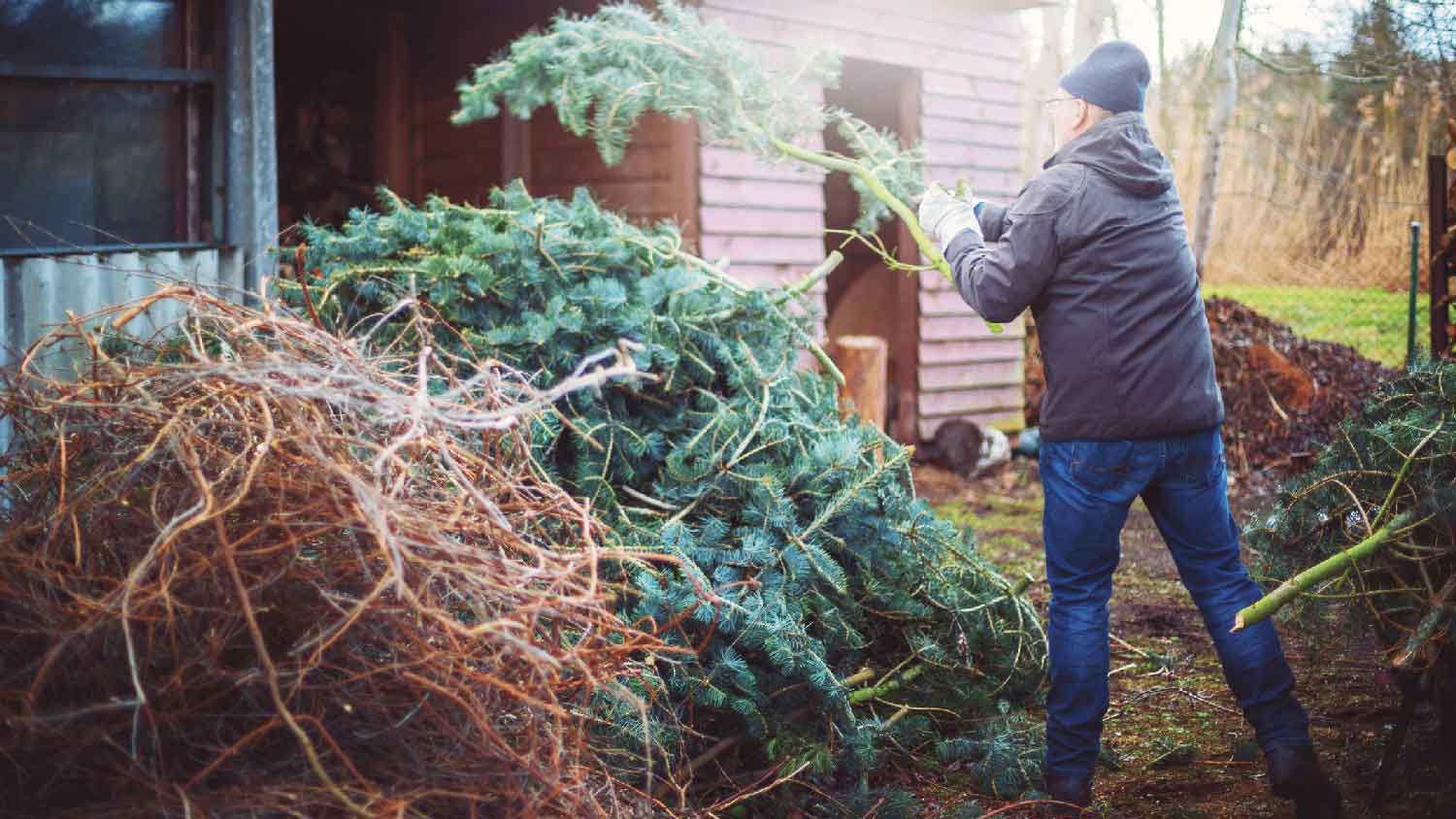Pros and Cons of Mulching Leaves: What To Know
Should you retire your rake and mulch your leaves instead?


While most people default to raking leaves in the fall, it’s not the only way to clear your lawn. Consider the pros and cons of mulching leaves, which involves running your lawn mower over the leaves in the same way you would mow grass. Which method is best? We’ve rounded up the advantages and disadvantages of mulching and raking leaves to help you make the right choice.
Pros and Cons of Raking Leaves
Raking leaves is a classic way to remove leaves from your yard, but it can be a backbreaking task.
Pro: Grass Stays Healthy
A rake will aerate your lawn with every cleansing scrape, giving your grass room to breathe. Lingering leaf clumps, on the other hand, can smother your lawn and prevent it from growing back in the spring.
Pro: Prevent Mold and Disease
Thick layers of leaves can do just as much damage as clumps of leaves. Raking removes harmful leaf layers that can cause snow mold diseases, according to the University of New Hampshire. Raking away leaves, rather than just mulching them, lessens the likelihood that you’ll have to reseed in the spring.
Con: It Can Be Costly
Disposing of the leaves you rake can add up, depending on where you live. For example, some cities prohibit you from throwing them in your garbage can and instead require you to purchase separate bags for leaf disposal. If dumping your piles at a composting or waste convenience site is not an option, you may have to enlist the help of a local yard cleaning service.
There’s also the environmental consideration, too. “More resources are usually involved in hauling leaves away as well, making a bigger carbon footprint,” says Tara Dudley, Owner of Plant Life Designs.
Con: It Can Be a Daunting Task
No one ever said raking leaves was a simple task, especially if you have a large yard or a lot of trees to clean up after. Using a leaf blower, tarps, and committing to weekly raking sessions can help lessen the load, but it’s still a physically demanding job.
Pros and Cons of Mulching Leaves

Mulching leaves is a faster, less demanding way to gather leaves, but it’s still a process you must get right.
Pro: It’s Good for Your Soil
Mulching leaves into your lawn allows them to break down and boost the soil quality. Maple leaves, for example, have even been shown to reduce weed seed germination. Other leaves, like honey locust, are high in nitrogen, which helps grass and plants grow.
Pro: It’s Faster Than Raking
You can mulch leaves in the same time it takes to mow your lawn. This method is less physically demanding and you won’t waste a weekend on yard work. Enough said.
Con: You Need the Right Mower
To mulch leaves properly, you’ll need a curved mulching blade. This type of blade helps churns the leaves into smaller pieces that will absorb into your lawn easier. If your mower doesn’t currently have this feature, you can purchase a conversion kit from your mower’s manufacturer or at your local home improvement store.
Con: Doesn’t Work For Pine Needles
Mulching won’t work with pine needles due to their shape and texture. If you have a yard full of pine needles, or a combination, you'll need to rid them by raking.
Con: You Have To Mulch More Than Once
You’ll need to mulch your leaves multiple times throughout the season to prevent build-up. As with raking, thick leaf layers won’t decompose fast enough, which could kill your grass. Weather is also a factor. Mulching too many wet leaves will smother your yard and do more harm than good.
Frequently Asked Questions
It’s possible to over-mulch leaves. If the leaf mulch is thick enough that it’s blocking and smothering the grass, that’s a problem. Ideally, you should still be able to see the grass when you’re done mulching to ensure its ability to continue growing. The solution is to make another pass at the top layer of leaf mulch to collect some of the top layer.
Mulching leaves has many more lawn benefits than picking them up and removing them entirely. Leaf mulch supports healthy soil and grass growth, plus it fertilizes your lawn as the leaves decompose. That way, you can save time (and your back) from picking up every leaf in your yard, too.
It typically takes six to 12 months for leaves to decompose entirely. The process involves the mulch composting into your lawn to deliver nutrients that facilitate grass growth. The recommended process is to spread a thick layer of leaf mulch over your garden and let it marinate for a few seasons for best long-term results.





- Should I Rake Leaves or Leave Them on My Lawn?
- How to Get Rid of Leaves Without Raking: 5 Easy Methods
- Do You Really Need to Remove Leaves from Your Lawn?
- What to Do With Leaves in Your Yard: A Complete Guide
- How to to Rake Leaves: 12 Tips to Try
- Who to Hire to Remove Leaves From My Yard
- The Best Way to Bag Leaves: 10 Tried-and-True Tips
- How to Get Leaves Out of Mulch in 4 Simple Steps
- Who to Hire for Mulch Projects
- 9 Fall Lawn Care Tips for a Healthy, Thriving Yard











